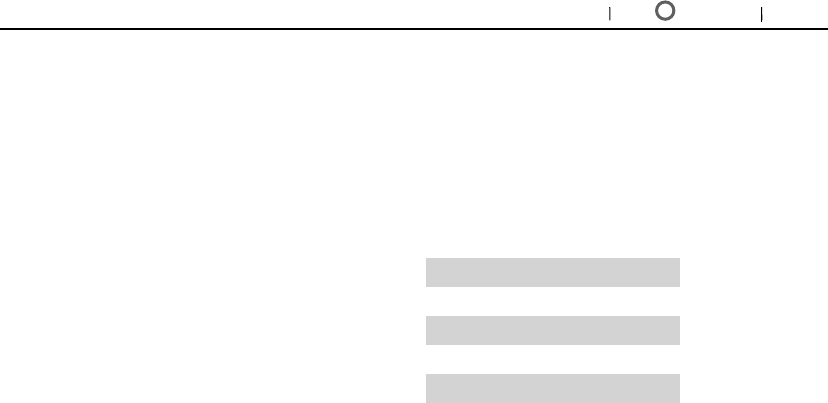
113
Local Taxes
tax.
hio
.gov
Real Property Conveyance Fee
Taxpayer
The real property conveyance fee is paid by
persons who make sales of real estate or used
manufactured homes.
Tax Base
The base of the tax is the value of real
estate sold or transferred from one person to
another.
Rates
The conveyance fee consists of two parts.
A statewide mandatory tax of 1 mill ($1 per
$1,000 dollars of the value of property sold or
transferred) applies in all 88 of Ohio’s coun-
ties. In addition, counties may also impose a
permissive real property transfer tax of up to
3 additional mills. As of 2009, the most recent
year for which data is available, 87 of 88 coun-
ties levied this additional tax at rates ranging
from 1 mill to 3 mills. (The exception was Ross
County.)
Major Exemptions
The tax does not apply:
• to sales or transfers to or from the U.S.
government or its agencies, or to or from
the state of Ohio or any of its political
subdivisions.
• to gifts from one spouse to another, or to
children and their spouses.
• to surviving spouses or to a survivorship
tenant.
• to sales or transfers to or from a non-
profit agency that is exempt from federal
income taxation, when the transfer is
without consideration and furthers the
agency’s charitable or public purpose.
• when property is sold to provide or
release security for a debt, or for delin-
quent taxes, or pursuant to a court order.
• when a corporation transfers property
to a stockholder in exchange for their
shares during a corporate reorganization
or dissolution.
• when property is transferred by lease,
unless the lease is for a term of years re-
newable forever.
• to a grantee other than a dealer, solely
for the purpose of, and as a step in, the
prompt sale to others.
• to sales or transfers to or from a person
when no money or other valuable and
tangible consideration readily convert-
ible into money is paid or is to be paid
for the realty, and the transaction is not
a gift.
• to an easement or right-of-way when the
value of the interest conveyed is $1,000
or less.
• to a trustee of a trust, when the grantor
of the trust has reserved an unlimited
power to revoke the trust.
• to the grantor of a trust by a trustee
when the transfer is made pursuant to
the grantor’s power to revoke the trust or
to withdraw trust assets.
• to the benefi ciaries of a trust, if the fee
was paid on the transfer from the grant-
or to the trustee or if the transfer is made
pursuant to trust provisions that became
irrevocable at the death of the grantor.
Revenue
(In Millions)
Tax Year Total Taxes
2005 152.1
$
2006 152.7
2007 130.8
2008 99.0
2009 77.7
Disposition of Revenue
All revenue from the tax is deposited in the
general fund of the county where the property
is sold or transferred.
Payment Dates
The fee is paid at the time of the transfer,
generally as part of the closing process.

114
Local Taxes
Real Property Conveyance Fee
tax.
hio
.gov
Special Provisions
• County commissioners may prescribe
a lower permissive rate than generally
levied in the county for conveyances of
property receiving the homestead ex-
emption.
• The tax also applies to transfers of used
manufactured homes.
• Persons who purchase residential rental
property in counties with populations
over 200,000 must register their contact
and property information with the county
auditor within 60 days of the property
transfer. Auditors in these counties must
include a statement to this effect when
the property is transferred and with the
real property tax bill.
Sections of Ohio Revised Code
Sections 319.202, 319.54, 319.99, 322.01–
322.07 and 322.99.
Responsibility for Administration
County Auditor.
History of Major Changes
1967 The General Assembly enacts a manda-
tory real property transfer fee of 1 mill
and permits county commissioners to
impose additional taxes of up to 3 mills
on conveyances on or after Jan. 1,1968.
The revenue from both components of
the tax are distributed to the county gen-
eral fund.
1969 The General Assembly provides for the
repeal of a permissive transfer tax ad-
opted as an emergency by a vote of the
electorate.
1999 Both the mandatory and permissive taxes
are applied to the sale of used manufac-
tured and mobile homes occurring on
or after Jan. 1, 2000. Also, county com-
missioners are permitted to prescribe
a lower permissive rate than generally
levied in the county for conveyances of
property receiving the homestead ex-
emption.
2007 Owners of residential rental property in
counties with populations greater than
200,000 are required to register their
contact and property information with the
county auditor.
Comparisons with Other States
(As of September, 2010)
All of the comparison states except Indiana
and Texas levy a similar tax on real estate
transfers. This table shows state real estate
transfer taxes and the highest permitted local
real estate transfer tax for each state. All rates
are expressed in mills. Each mill represents $1
per $1,000 of value.
Maximum
Minimum Tax
Local Option
State
(imposed statewide)
Tax Rate
California --- 1.1 mills
Florida 7 mills
1
---
Illinois 1 mill 0.5 mill
2
Indiana None ---
Kentucky 1 mill ---
Massachusetts 4.56 mills
3
---
Michigan 7.5 mills 1.1–1.5
mills
New Jersey 4–12.1 mills
4
1 mill
New York 4 mills
5 6
---
Ohio 1 mill 3 mills
Pennsylvania 10 mills 4 mills
Texas --- ---
West Virginia 2.2 mills 2.2 mills
1 The Miami-Dade County rate is 6 mills.
2 The Chicago rate is 10.5 mills.
3 The Barnstable County rate is 6.12 mills.
4 Rates of 0.5 – 3.4 mills apply to senior citizens, blind or disabled
people and in certain other situations. Additional fees apply to transac-
tions valued over $1 million.
5 An additional 1 percent (10 mill) tax applies to transfers of more than
$1 million.
6 The maximum local rate in New York City is 26.25 mills.

115
Local Taxes
tax.
hio
.gov
Resort Area Gross Receipts Tax
Taxpayer
The tax is paid by persons making general
sales or providing intrastate transportation
within a designated resort area.
Tax Base
The tax is a business privilege tax measured
by gross receipts derived from sales made
within the boundaries of a designated resort
area as well as intrastate transportation to and
from such an area. Gross receipts included in
the tax base include those derived from:
• Wholesale and retail sales, including
food consumed on the premises.
• Rentals and leases of watercraft, golf
carts, bicycles, videos, and fi shing tackle.
• Hotel and motel room rentals.
• Sales of repair and installation labor.
• Warranties, maintenance or service con-
tracts.
• Sales of personal and professional ser-
vices.
Rates
The tax may be levied at rates of 0.5 per-
cent, 1 percent, or 1.5 percent. Currently, only
three jurisdictions impose the tax: the village
of Kelley’s Island, the village of Put-in-Bay, and
the township of Put-in-Bay. Each jurisdiction
has set a rate of 1.5 percent.
Major Exemptions
Gross receipts from the following sources
are exempt from the calculation of the tax:
• Food sold for off-premises consumption.
• Installation of improvements to residen-
tial or business real property and repair
of those installed items.
• Attorney, legal or medical services.
• Charter fi shing trips.
• Dockage fees.
• Campsite fees.
• Waste disposal fees.
Revenue
(In Actual Dollars)
Fiscal Year Total Taxes
2006
$
672,227
2007 773,161
2008 747,299
2009 801,280
2010 805,536
2011 826,990
Disposition of Revenue
Receipts from this tax are designated for the
general revenue of the township or municipal-
ity.
Payment Dates
There are two semi-annual reporting peri-
ods for the tax:
• Returns due July 31 document the period
from Jan. 1 through June 30.
• Returns due Jan. 31 document the period
from July 1 through Dec. 31.
Special Provisions
The resort area gross receipts tax is not a
sales tax or a tax on transactions. It may not
be separately listed on an invoice or receipt to
customers and it may not be collected directly
from customers.
Sections of Ohio Revised Code
Sections 5739.101 – 5739.104.
Responsibility for Administration
Tax Commissioner.
